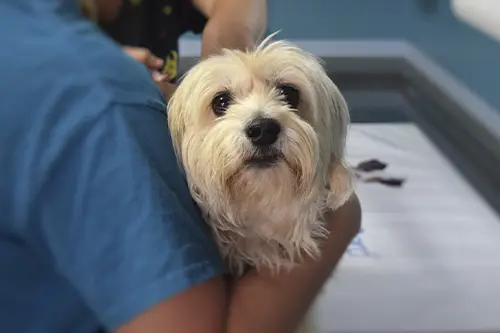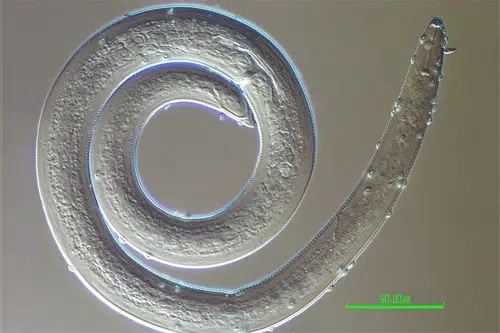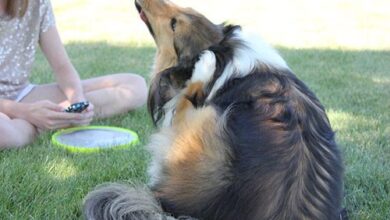Nematodes in Dogs: Symptoms & Treatment


Nematodes in dogs can go unnoticed for a long time, but an infestation can be very dangerous. In addition to proper prophylaxis, it is decisive to detect the signs of an infestation in time and treat it with medicines.
Symptoms: How does a dog that has nematodes behave?
A nematode infestation in dogs usually goes unnoticed for a long time. Thus, the dog may not manifest any of the following symptoms until months or years after becoming infected:
- Lack of appetite and weight loss
- General malaise caused by anemia
- Gastrointestinal disorders, such as viscous or bloody diarrhea or vomiting
- Developmental disorders in puppies
- Hirsute and dull hair
- Itching in the anus that causes the dog to drag the butt across the floor (like a sled)
- In case of heart or lungworm infestation, respiratory problems such as cough or dyspnea
- Clotting disorders that are noticeable by bleeding such as bruises or bloody stools
Can they also be transmitted to people?
Since some species have zoonotic potential, people, especially children, can also become infected.
Diagnosis: How are they detected?
In case of suspected nematode infestation in dogs, veterinarians can perform a stool analysis. To do this, they need a stool sample, if possible containing samples from three consecutive days.
There are several methods, such as flotation or Baermann-Wetzel, that allow the detection of eggs or larvae in feces.
In addition, the presence of antigens of certain worms can be found with a blood test.


Treatment: How are they treated?
In recent years, science has discovered that not only antimicrobial resistance but also anthelmintic resistance has progressed. Therefore, specialists do not recommend treating an infestation impulsively but basing treatment on a previous stool examination.
Veterinarians advise following a deworming plan. This means deworming puppies at two, four, six, and eight weeks. They should then be examined every three months and dewormed if necessary.
After treating the dog against nematodes, it is important to check whether it has taken effect with a new stool examination. Depending on the medication, it should take place seven days (eg, fenbendazole) or three weeks (eg, macrocyclic lactone) after the last dose.
Causes: What are the triggers?
Nematodes include several species of worms that can also infest other animals, such as cats or horses. They are thread-like and are endoparasites, meaning they live inside the host’s body. Instead, ectoparasites, such as ticks, mites, or fleas, live on the host’s skin.
Nematodes can be between a few millimeters and a meter long.
The most common nematodes in dogs
There are different species of nematodes, but these are the ones that affect dogs the most:
- Hookworms
- Nematode
- Lungworms
- Heartworms
Prognosis: What are the chances of a cure?
The prognosis of a nematode infestation in dogs depends on the species and the health status of the dog. Immunocompromised dogs, either because they are sick or are puppies, can suffer from a serious course of the disease.
If an infestation is ignored or left untreated, it can end up causing serious lung damage or gastrointestinal disorders. In severe cases, it can be fatal.


Prevention: How to protect your dog
Nematodes are found not only in the host but also in the environment at infectious stages. To prevent an infection in your dog, other dogs, and children, take note of the following measures:






